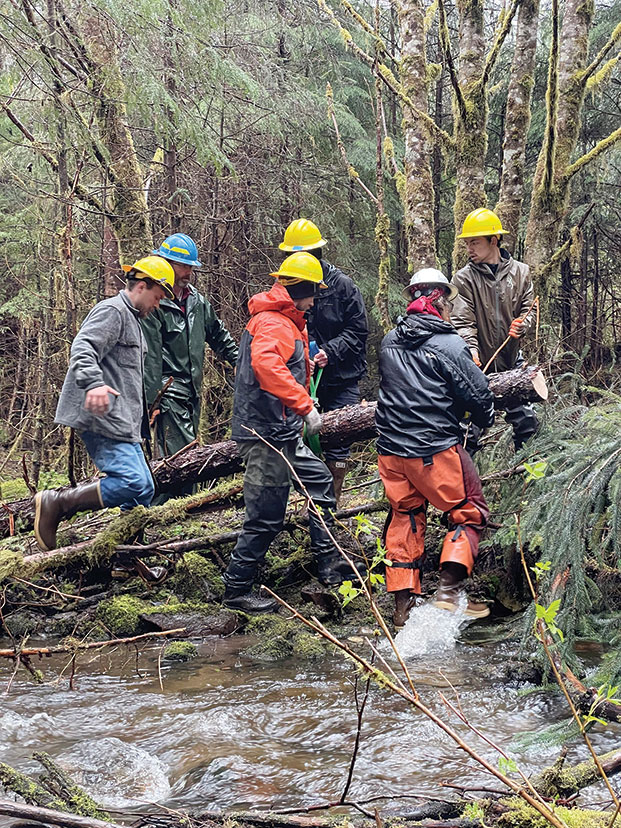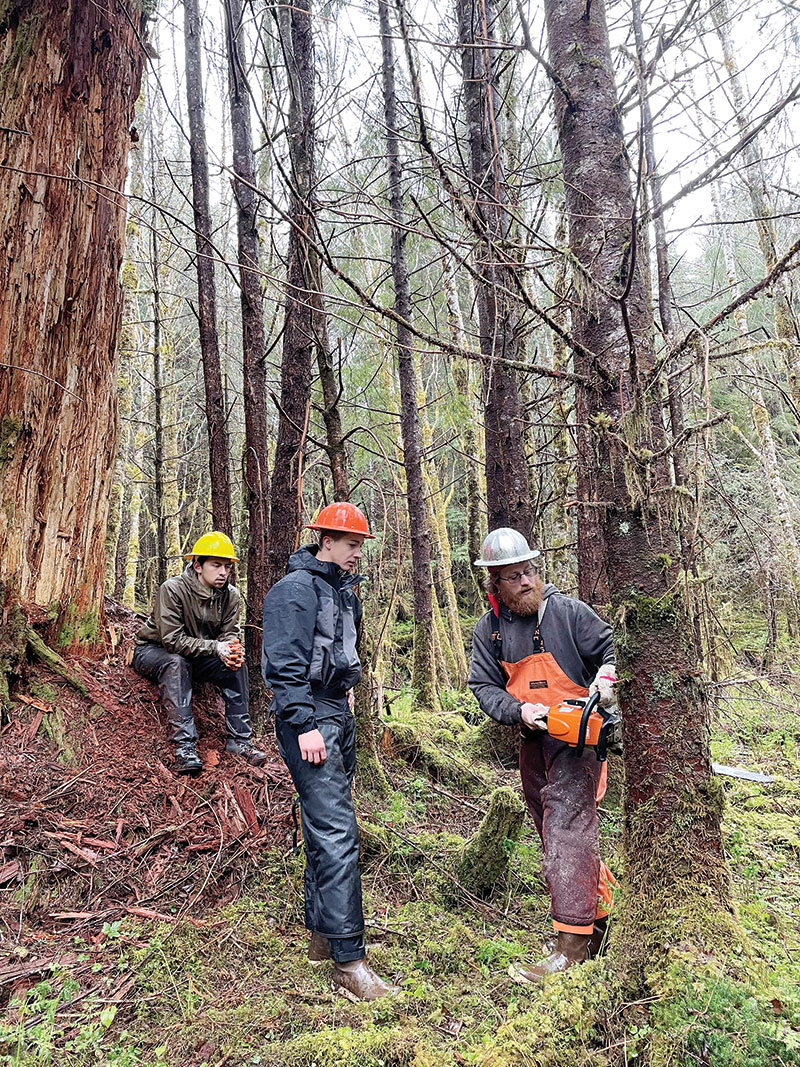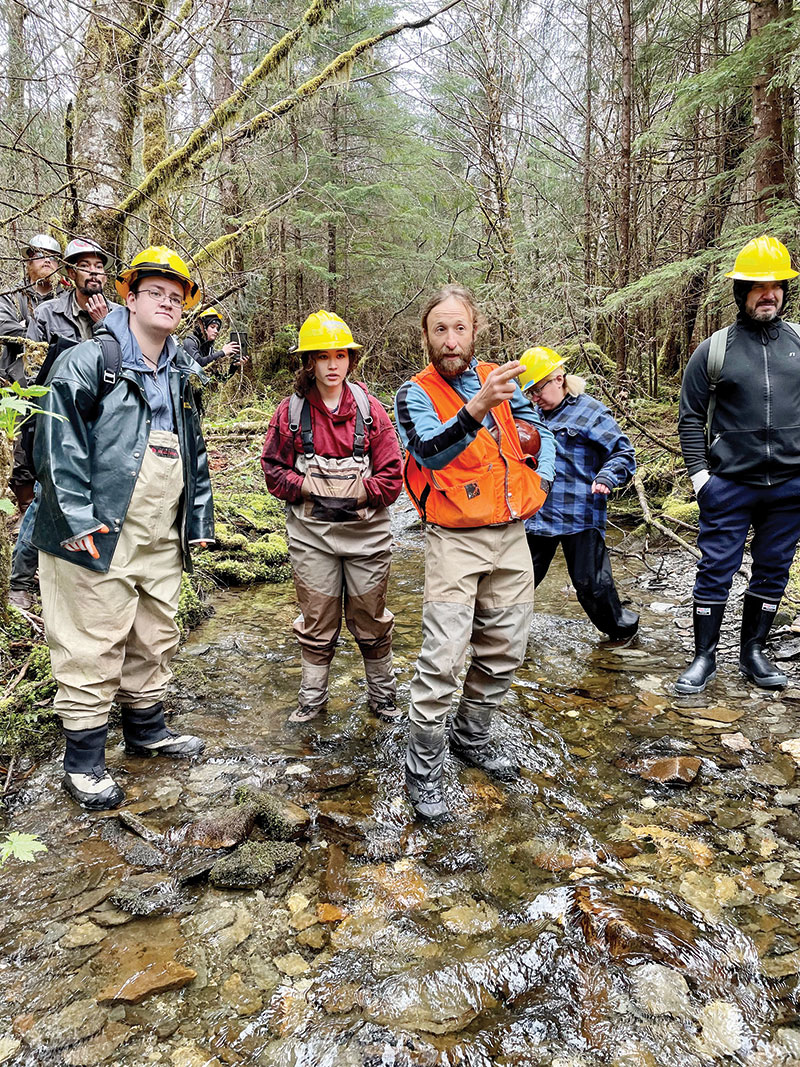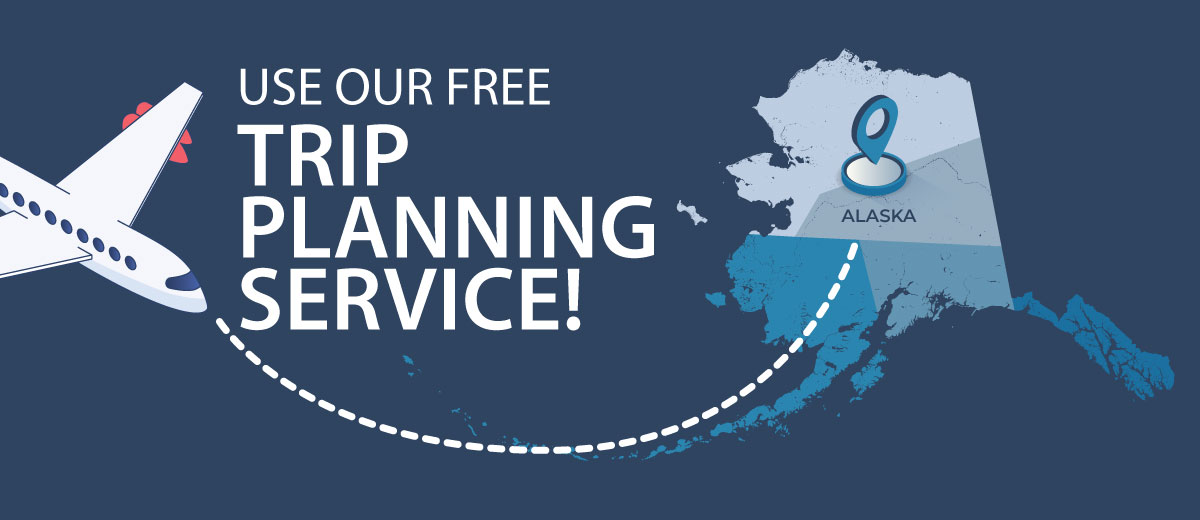Creating a Tribal Restoration Workforce
Story and photos by Marian Giannulis
The rain slowly fell on a cool May morning as a small crowd of people gathered in a pullout alongside an old logging road in Ketchikan. The blend of official U.S. Forest Service vehicles and uniforms intermixed with private vehicles and casual clothes gave a clue to the diversity of people in attendance. The crowd was comprised of varied backgrounds and employers. Tribal members, hydrologists, fisheries biologists, chainsaw crews, and various staff were all there for one thing: to teach and learn the skills necessary to restore streams and improve fish habitat in the Tongass National Forest.
In the summer of 2021, the Forest Service announced their plan to move away from large scale, old-growth logging in the Tongass and instead invest in restoration, recreation, and forest resilience. This new strategy is welcome news on the Tongass, which is part of the largest intact temperate rainforest on the planet, and the robust tourism economy and subsistence practices that depend on it. Restoration work will advance watershed-and-habitat improvements to fix critical fish-and-wildlife habitat that has been degraded by decades of clear-cut logging. The Forest Service has a long list of restoration projects to complete on the Tongass, but a new workforce was needed.

Rebecca Belmore with SAWC and Robin Welling with the Forest Service operate a capstan winch.
The Southeast Alaska Watershed Coalition (SAWC), a Juneau-based non-profit dedicated to fostering partnerships to steward southeast Alaska watersheds, stepped in to help fill that need. Together with the Forest Service and the Ketchikan Indian Community, they hosted a restoration workforce-development training which trained members from several Tribal Communities in the skills necessary to gain employment on restoration jobs. The on-site event in Ketchikan trained participants from the Metlakatla Indian Community, Ketchikan Indian Community, Klawock Cooperative Association, Prince of Wales Tribal Conservation District, Shaan Seet Inc., and the Klawock Indigenous Stewards Partnership.
Over the course of three days, participants learned how to use hand tools to complete restoration work by actively restoring a tributary of Ward Creek, which is home to several salmon species, cutthroat trout and Dolly Varden. The area was clear-cut logged in 1987, and the effects on fish habitat are still felt to this day. Logging removed the trees that once lined the creek, providing shade that kept water temperatures cool and filtering out sediment that can smother fragile salmon eggs. Streamside vegetation is crucial for healthy fish habitat; when a tree dies or is blown into a stream it creates pools which are important for fish. Without that vegetation, the channel straightens, the flow accelerates, and fish habitat deteriorates. Much of the restoration work on the Tongass installs large, woody debris in the streams to simulate natural features found in healthy streams.

Hauling a log down to the stream.

A crew works to place a log into the stream.
“Restoration is something between an art and a science,” explained Rob Cadmus, the executive director of SAWC, as he began instructing the group. After introductions and a safety briefing, the participants split into groups and began tackling individual sites along the creek. Each group was led by an instructor, but the decision on what work would be completed and where was made by all. The groups fanned out over a mile-long stretch of the creek and identified areas where the habitat was most degraded. They talked through which restoration methods would be most effective and then got to work building structures. This teaching method empowered each member of the crew with the knowledge needed to do stream assessment and prioritization of restoration areas and will help them take that knowledge back to their own communities to make informed decisions on what their local watersheds need.
Soon the buzz of chainsaws was heard throughout site. Second-growth trees were felled away from the creek and then hauled streamside through a system of pulleys and winches. Participants and instructors worked together to build new log jams in the creek, reinforce stream banks, and add vegetation to the floodplain to keep the water flowing through the main channel. “We were never here, make it as natural as possible,” noted Forest Service hydrologist Heath Whitacre. A total of eight natural structures were built during the workshop. Years from now, visitors to the area will come across the stream and be none the wiser of the large human effort that worked to improve the fish habitat there. Each structure mimicked formations that would have naturally developed in the stream had it not been logged to the waterline.
“When you’re done with it you feel proud about it because you did something really cool,” expressed Quinn Aboudara with Shaan Seet Inc. and crew leader of the Klawock Indigenous Stewards Partnership. Quinn participated in the workshop as both a mentor and participant. He has worked extensively on Prince of Wales Island and will take knowledge learned at the workshop back to the island to help advance future restoration work there.

Quinn Aboudara with Shaan Seet Inc. demonstrates a chain-saw cut to Cody Ellison and Spencer Guthrie.
Cody Ellison is also with Shaan Seet Inc. but is much newer to restoration work. Cody previously worked as a logger. He came across this opportunity and was eager to use the skills he learned in logging to help improve fish-and-wildlife habitat. Cody is glad restoration work has provided him with good employment right at home on Prince of Wales Island. After the workshop, he will travel back home to work on stream surveys, restoration projects, and thinning second-growth forests for wildlife habitat improvements. As an avid angler and hunter, Cody is appreciative of the “real purpose” this newfound work has given him.
Prince of Wales Island is just one of the many places that will benefit from the workforce trained during the workshop. Amy Hayward of the Ketchikan Indian Community is headed to work on the Margaret Creek restoration project after the workshop wraps up. “I’ll be walking away with a lot of knowledge that I didn’t have before this opportunity,” said Amy. She is also new to restoration work and the training is providing new employment opportunities close to home. The Margaret Creek project is a priority project for the Forest Service and SAWC, located on Revillagigedo Island approximately 22 miles northwest of Ketchikan. The project will restore about two miles of salmon habitat for sockeye and coho salmon. The Ketchikan Indian Community work crew will spend two weeks at the remote site adding large wood with hand tools, while a local contractor will use heavy equipment to restore larger mainstem sites.
The need for a restoration workforce will continue to grow as the Forest Service works to complete more and more projects across the Tongass. Each restoration project is an opportunity to employ local people and bolster the fish-and-wildlife populations that southeast Alaskans so heavily depend upon. The economic and ecological benefits of this work are vast. And the sense of community built around Tribes, federal agencies, non-profit organizations and communities all coming together to work towards improving the health of the forest is invaluable. Through restoration work, we now have a great opportunity to steward the lands while providing local jobs.

Rob Cadmus of SAWC instructs the group.
Trout Unlimited’s mission is to protect, reconnect and restore North America’s coldwater fisheries and their watersheds. Learn about our work in Alaska at home.tu.org/tu-programs/alaska. Marian Giannulis is the Alaska Communications & Engagement Director for Trout Unlimited.


